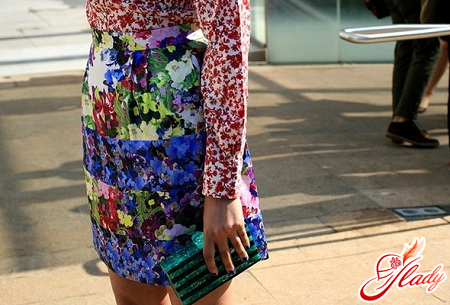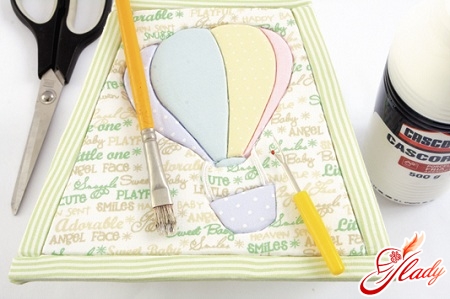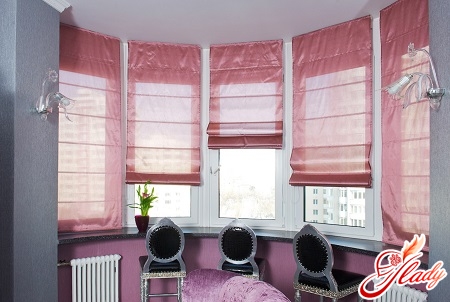
Roman blinds, already used in Europeseveral centuries, appeared in Russia relatively recently and immediately gained huge popularity due to its simplicity and functionality. We will tell you how to sew a Roman blind. Such curtains, sewn from a piece of fabric and similar to waves, can be made by yourself at home. In order to sew Roman blinds with your own hands, decide how you want to place them on the window: inside the opening or outside? If inside the opening - then the curtain will be near the glass. Outside - then the piece of fabric should be larger than the window opening by 7-10 cm to the left and right. In this case, the cutting principle is the same. Take the measurements and now think about whether you have a beautiful piece of fabric that has been lying around for a long time? Thick fabric, for example, curtain fabric, will work great, but lightweight material with a catchy pattern will not work. Do not forget that a Roman blind should have a beautiful wave, lightweight fabric will not hold its shape, and a bright pattern will not look good on the window at all. If you haven't found it at home, look in a store. Try to choose a material with a complex weave. It won't be expensive, since a minimum of fabric is required. If you decide to do everything yourself, then the design of the Roman blind should also be made by you. If for some reason you don't want to make it, ready-made designs are sold in the store. List of necessary materials:
Step-by-step instructions for making Roman blinds
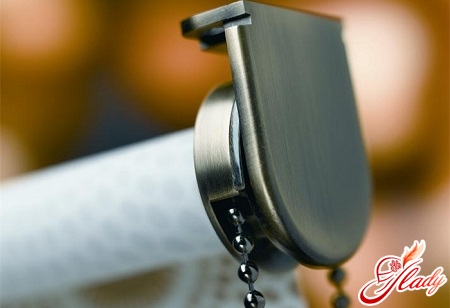
Roman blinds without laths
Roman blinds without slats— this is the very first version of these curtains. In this case, you need two bars, upper and lower, cords and, most importantly, a double curtain fabric. Do everything as described above, but instead of sections, sew on rings. The outermost ones are 4 cm from the edge of the side. Then you can experiment. You can sew one ring in the middle. Thread the cords in the known manner. If you need more rings, then calculate the distance between the cornice and the cords. All you have to do is sew the Velcro tape, and the curtain is ready. How to sew a curtain using decorative edging You can decorate your homemade curtain with edging. Make it curly or straight, but reinforce it with interlining or interlining. Sew the curtain on the lining. Cut out a piece from the interlining fabric along the finished edging and glue it to the front surface from the wrong side along the bottom. Do not forget to leave room for allowances. Next, stitch the top fabric and lining together with a sack, iron, cut the corners, and notch the roundings. Turn inside out and iron again. Sew a 3 cm wide fabric (a drawstring under a block) at the top of the decorative piping. Do not stitch one side. Mark as usual, but take the distance from the drawstring to the top. Make the piping larger than half the section, otherwise it will simply not be visible.
How to sew Roman curtains with your own hands
You can do without using tape and makedecorative pinches on the front or back side and insert slats into them. In this case, the front pinches will become a decoration of the curtain, and the back ones will make the folds perfect. Before cutting, count the number of sections, multiply the result by 1.5 and add to 15 cm left for the height allowance. In this case, take a single fabric. The curtain in an almost finished form (the top and bottom are folded) is marked, 3 cm of the drawstring is subtracted and the width of the sections is calculated. It is necessary to mark from the bottom, from the drawstring, draw a section line, then a 1.5 cm pinch, another section, 1.5 cm pinch, and so on. The lines on the fabric are made on the side where you will have the pinches. Fold them in half, pin them and sew them on. Iron the finished curtain and sew on the Velcro tape.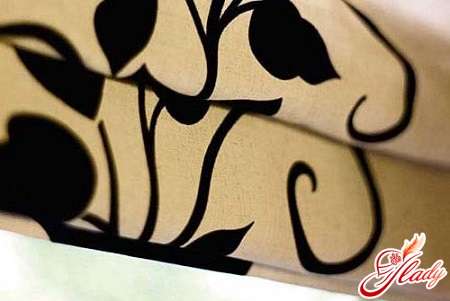
How to fix possible errors
If the sides of the curtain are skewed, you haven't checked.fabric for skewing. But even if there was no skewing in the fabric, it is extremely important to use a ruler when cutting and maintain right angles. If the side seams have tightened, the sewing was of poor quality, check the thread tension in the sewing machine. Another reason may be too thorough ironing of the seams. The fabric in these places can shrink under the influence of high temperature. The transverse tape has tightened because you did not attach it with pins or did not iron it before sewing. Always do this in advance, since the tape is made of synthetics and will inevitably shrink when further ironed. Ribbed sides occur if the material under the tape has been stretched. In such cases, you should rip it out and do the whole job again. The lining of the double curtain has tightened, and the front side is covered with bubbles. Keep in mind that the lining is made of synthetics, and before sewing it must be treated with a hot iron. The front part, on the contrary, is often made of natural material. Before cutting, do not be lazy, soak the fabric in hot water. The necessary shrinkage will occur, and such troubles will not arise.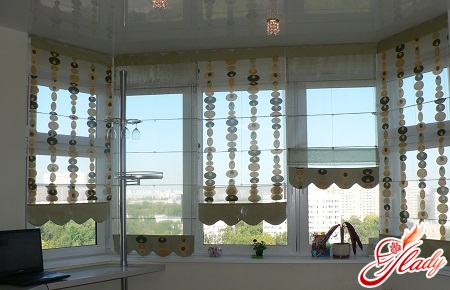
Application of Roman curtains
Roman blinds can decorate any interior.These curtains will look great in any interior style. In a classic style, they will only emphasize the beauty of the lines. In a bohemian interior, they will help to muffle the arrogance. In a high-tech style, their use can be a very original solution. Such curtains look great in the kitchen, when you are tired of ordinary curtains and want something new. This is an ideal option for small windows, but they also look appropriate on huge windows, you just need to arrange them in rows. You can hang such curtains not only on the windows, but also on the interior doors. And if you organize a children's theater at home with children, then Roman blinds will play the role of a screen. If you want to use Roman blinds in your bedroom, you will be able to adjust the level of illumination. In cases where the bedroom is small, make curtains to match the color of your walls. This method makes the room larger. And the curtains should not be very thick. Diffused lighting will add volume to a small room. For the living room, choose thick fabrics. Roman blinds look very beautiful in combination with long curtains, but if the room is small, leave only Roman blinds. If you choose Roman blinds in contrast to the surrounding environment, this will add solemnity to your living room. Roman blinds in the kitchen should be combined with decorative elements. But if you are the lucky owner of a large kitchen, then you can experiment. For windows facing north, the curtains should be light in color and of medium density. The most practical materials for kitchen curtains are cotton, linen and blended fabrics. In a child's room, you can often see very bright curtains with patterns. This is a big mistake - to use such curtains for a child's room. This is an unsuccessful option for a child's psyche. If you want brightness, choose plain curtains. And it is best to sew Roman blinds yourself. Remember: yellow adds a good mood. Orange energizes. Light blue and blue calm down. Green relieves fatigue. Roman blinds have found their application in any style, in any setting they look harmonious and elegant.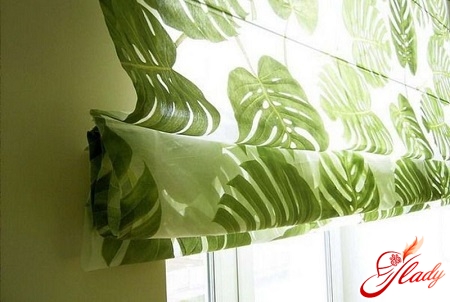
Roman curtains and hi-tech style
The high-tech style is distinguished by its restraint,functionality, practicality. For some, it seems bold and provocative. The shades of the color scheme should meet the same requirements. The following colors accompany this style: all shades of gray, black, white, brown. Olive and swamp colors can be used. When adhering to this style in the interior, you should not mix more than two colors. Metallic decorative elements are welcome. Fabrics should be heavy, dense, with a metallic sheen. You can also use natural materials: natural and artificial silk, satin, sateen and linen.
Roman blinds and country style
The country style is distinguished by its comfort and special coziness.Country style interiors are loved by those who are tired of the bustle of the city and want to create an atmosphere of their childhood in their home. In this style, it is appropriate to use all kinds of appliques and embroideries. The use of curtains in this style should adhere to certain rules: French country - the fabric should have small flowers; American country - flowers are located on the fabric, but larger and brighter; African country - material with large flowers and very bright shades. Natural fabrics are used in this style: cotton, linen, chintz. You can use artificial materials. The patchwork technique looks good in this interior style. By sewing pieces of fabric and making an original pattern, you can decorate any window with such a curtain. You can make knitted curtains and decorate them with wood or ceramics.
Roman curtains and classic style
The classic style is used not only inhouses, but also in offices. It is very popular in large companies and financial institutions. Using this style, they usually want to emphasize their importance, stability and traditionalism. Curtains, sustained in this interior style, should be elegant, combine tradition and modernity. Material for curtains: cotton, viscose, linen. Of heavy fabrics, velvet, jacquard, velor are used. In this case, it is better to use a color closer to natural. These can be shades of blue, green, yellow, beige. In the classic style, noble brown is often used. Using Roman blinds for a classic interior, try to make the curtains emphasize the overall range of the room, and not stand out as a separate spot.
Roman curtains and ethnic style
Ethnic style in the interior always expressesculture and color of one nation, rich in traditions. The interior usually contains numerous drawings, fabrics and things that characterize the lifestyle of this nation. Japanese and Chinese colors in the interior can be expressed in the use of silk and satin fabrics of blue, red and even black colors, painted with hieroglyphs. Scandinavian style is characterized by asceticism, coldness and restraint. Fabrics for curtains are selected accordingly: colors from terracotta to white. At first glance, these are rough and simple fabrics, but the first impression is deceptive. This style uses high-quality natural materials. African color in curtains is expressed in brown and green. Usually, preference is given to linen fabrics of deep saturated shades.
Roman curtains and eclecticism
This style is able to combineincompatible things. A disjointed space suddenly, thanks to such details as curtains, turns into a harmonious whole. Sociable, mobile, modern people like to live in this style. The design of this style can combine completely incompatible furniture, household appliances, but thanks to the applied color solutions, smooth lines and textiles, all this space is united into one whole. Curtains in this style play a very important connecting role. Usually, Roman blinds of dense materials are used, and they are complemented by whole clouds of tulle, organza or veil. Roman blinds in this interior are often complemented with tassels, beautiful fringe or ribbons.






